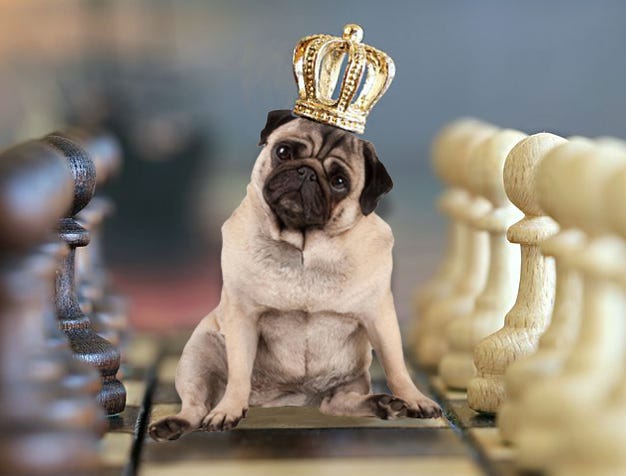UP YOUR DOG SHOW GAME
Helping Breeders &
Exhibitors Succeed in the Show Ring

GREAT QUESTION

There are many things that affect how a dog moves – and how she looks as she is gaiting. Among them are where and how the lead is placed on the dog, how and where the handler holds the lead, speed and length of handler’s stride, and where the handler looks while moving the dog. A handler who spends most of the time looking at the judge is doing herself and her dog a disservice. There have been times that I called this way of moving the dog the junior showmanship movement, because it is seen many times in the Juniors ring.
Continually looking over at the judge as you are moving your dog affects your dog in many ways – all of them bad. When a handler keeps looking up at the judge, it almost always causes the handler to move her arm from side to side, with the result being that your dog’s stride is thrown off, causing your dog to also move side to side and out of balance. When the handler continually looks up and to her left to see the judge, almost always this causes the handler’s stride to be shortened, and obviously, the dog adjusts her stride to the handler, making it look as if it has no forward reach (which would normally be seen if the dog was straight in shoulder). Not the impression you want to make on the judge..
I have even seen handler’s try to look at the judge on the down and back, with the result that the handler’s arm is going forward and back, causing it to jerk at the dog, who now cannot move freely or with any confidence. Spending too much time looking at the judge rather than at the dog and where you are headed almost always means the handler will not move in a straight line. The result of this is that the dog is not moving in a straight line. Often this causes the dog to cross over in the front or rear, which definitely is sending the wrong look to the judge.
The purpose of moving your dog is to show or confirm how the dog’s structure allows it to move. If you have a well-constructed dog, but you are throwing off its stride, rhythm, and balance, you are ruining your own dog. When you move your dog, your attention should be focused on where you are going (so you move in a straight line) with glances at your dog to see that the two of you are moving in synch. On the down and back I recommend aiming for the stanchion at the corner of the ring, and then concentrate on the length and speed of your stride, so that you and your dog are moving as a team in balance.
Learn what it means when the judge tells you that your dog is pacing (you should be able to see or feel it as you are moving). Usually the way to correct this is to change your speed – maybe a slight tug on the lead and increasing your speed slightly will help.
Here's an example of how the handler can ruin his own dog. Many years ago, I had a very nice English Cocker Spaniel puppy. I took her to the Spaniel specialty, and I was excited to show her to Anne Rogers Clark. Just before starting to move on the down and back, I made the terrible mistake of showing her the bait. No matter how much I tried to hide the bait as we moved, Dee Dee kept trying to get to the bait, with the result that she practically hip-hopped sideways down the ring and back. When we got back to the judge I said, “I’m sorry. May I do that again?” To which, Mrs. Clark replied, “NEVER do THAT again!” The result was that my very good puppy did not even place that day. Lesson learned.
I hope that helps. Have fun with your dog.